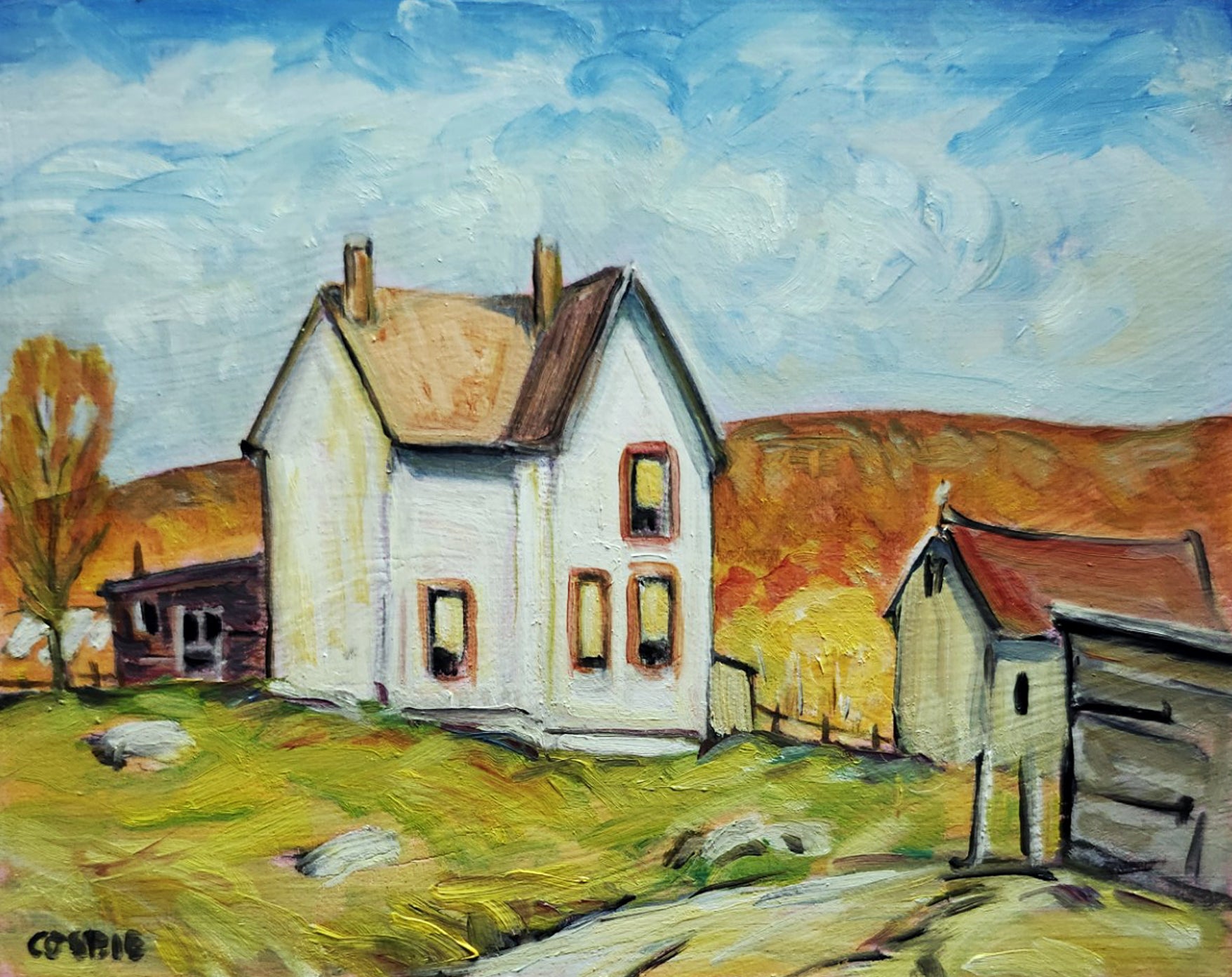The Benefits of Buying Oil Paintings: Why They Are a Timeless Investment
The benefits of purchasing oil paintings expand beyond plain aesthetic appeals. These artworks bring historical importance and social value, making them worthwhile enhancements to any type of collection. Their unique structures and techniques add to an appealing visual experience. In addition, well-known musicians usually see their work value in time, providing a possible economic benefit - oil paintings for sale. As one explores the diverse factors for spending in oil paintings, the much deeper ramifications of such a choice ended up being increasingly evident
The Aesthetic Charm of Oil Paintings
The appeal of oil paintings hinges on their dynamic shades and abundant structures, which can transform any type of room into a remarkable environment. These artworks have a deepness that captivates visitors, attracting them right into the complexities of the brushstrokes and the interaction of light and shadow. The shiny surface of oil paint enhances the visual experience, enlivening scenes and subjects in a means that mediums usually can not attain. Additionally, the selection of designs-- from timeless to modern-- enables a varied option that can enhance any type of design. The emotional resonance shared via shade selections and methods adds a layer of connection in between the onlooker and the artwork, making oil paintings not just attractive things, yet powerful expressions of creative vision.
Historic Relevance and Cultural Value
Oil paintings function as vital links to an artistic heritage, showcasing techniques and designs that have evolved over centuries. They envelop social expressions and identifications, mirroring the worths and narratives of their time. By getting these works, people add to the preservation of background and the gratitude of varied cultural legacies.
Artistic Heritage Conservation
While lots of may overlook the significance of imaginative heritage, purchasing oil paintings plays a vital duty in preserving social and historical narratives. These artworks work as aesthetic documents of their time, capturing the significance of societal values, traditions, and historic occasions. By obtaining oil paints, collectors add to the guarding of cultural legacies, ensuring that future generations can appreciate and learn from these artistic expressions. Each item shows the unique tale of its developer and the context in which it was made. Furthermore, the ongoing appreciation and display screen of oil paints in various setups assist to foster an understanding of diverse creative activities, enriching the social landscape. Investing in oil paintings is not merely an economic choice but an act of cultural stewardship.
Cultural Expression and Identification
Art acts as an effective tool for social expression and identity, reflecting the diverse narratives that shape cultures. Oil paintings, in certain, capture the essence of cultural heritage, illustrating sociopolitical climates and historic contexts. Each brushstroke conveys stories and emotions unique to certain practices, permitting visitors to involve with the musician's social history. This connection fosters a feeling of belonging and understanding among different communities. Additionally, oil paints frequently offer as visual documentation of social evolution, showcasing changes in identity gradually. The investment in these art work not only supports artists however additionally protects cultural legacies, making them substantial assets for enthusiasts. Eventually, oil paintings improve one's appreciation for the intricacies of human experience and the abundant tapestry of cultural identity.
Recognition in Value With Time

The admiration of oil paints with time is affected by numerous aspects, consisting of historical value fads that mirror changing preferences and social relevance. Additionally, the reputation of the artist plays an important duty in establishing the art work's market value, often enhancing as the musician gains acknowledgment. Market need fluctuations can better influence costs, making oil paintings a possibly rewarding investment for collection agencies.
Historical Worth Patterns
As enthusiasts look for to purchase substantial possessions, the historic value patterns of oil paintings reveal an engaging narrative of gratitude over time. Historically, oil paintings have actually demonstrated a consistent higher trajectory in value, specifically for jobs by well established musicians. Economic cycles and market need have influenced these fads, with periods of raised passion frequently bring about significant cost rises. Auction documents often highlight the remarkable returns attained by renowned items, even more reinforcing the notion of oil paintings as viable long-term financial investments. Furthermore, cultural movements and changes in collection agency preferences have actually sometimes stimulated unexpected admiration, exposing that the art market, while somewhat uncertain, typically favors high quality oil paints. Consequently, comprehending these historic patterns can direct financiers in making informed decisions.
Artist Reputation Influence
While the credibility of an artist plays an essential role in the appreciation of oil paintings, it is very important to identify that this influence can vary considerably based on a number of elements. Developed musicians, specifically those with a considerable historic or social influence, tend to see their jobs value a lot more quickly. On the other hand, lesser-known or arising musicians may not experience the very same level of demand, impacting their artwork's value. In addition, the musician's capacity to develop a constant body of work and maintain significance in the art world can influence lasting appreciation. Collectors usually seek jobs from musicians that are identified by reliable galleries and organizations, which can further improve the worth of an oil painting gradually, making artist online reputation an essential consideration in investment decisions.

Market Demand Variations
Exactly how do market demand fluctuations influence the recognition of oil paints gradually? The worth of oil paints is fundamentally linked to market demand, which can vary based on economic conditions, patterns, and collectors' preferences. In times of economic prosperity, demand usually rises, bring about enhanced prices as more purchasers enter the market. Alternatively, during financial recessions, need might decrease, triggering worths to go stale or perhaps decrease. Furthermore, the popularity of particular artists can move, impacting their work's charm. Inevitably, recognizing market demand is necessary for financiers, as well-managed collections can value substantially gradually, mirroring both the talent of the musician and the more comprehensive market characteristics. This interaction underscores the value of critical purchasing in oil paint investments.
Distinct Appearances and Techniques
Oil paints mesmerize audiences with their distinctive textures and methods, showcasing the musician's proficiency over the medium. The thick application of paint, called impasto, creates a three-dimensional result, welcoming touch and enhancing visual deepness. Artists typically use different brush strokes, layering, and polishing techniques to achieve elaborate information and luminescent shades. This adaptability allows for rich contrasts and refined shifts, making each artwork uniquely meaningful. The sluggish drying out time of oil paint enables artists to mix colors seamlessly, resulting in lively tones and smooth slopes. These techniques contribute to the paint's total personality, making it a compelling prime focus. Each oil paint works as an indication of the imagination and skill inherent in traditional imaginative techniques.
Convenience in Home Design
The one-of-a-kind textures and methods of oil paints not just showcase creative skill but additionally boost their adaptability in home decoration. These artworks can perfectly match numerous indoor designs, from modern minimal to traditional elegance. Oil paintings work as focal factors, attracting focus and stimulating discussion amongst guests. Their rich colors and deepness can harmonize with different color schemes, making them versatile to transforming style trends. In addition, the psychological resonance of oil paintings can create ambiance, whether it be warmth in a relaxing living-room or vibrancy in a creative work area. By integrating oil paints, home owners boost their spaces, changing them right into attentively curated environments that show individual taste and imaginative gratitude. Inevitably, oil paints are a long-lasting selection for improving home visual appeals.
Link to Popular Artists
While several art kinds can stimulate adoration, buying oil paints usually develops a special link to popular artists throughout background. Possessing an oil paint enables collection agencies to engage with the creative visions of masters like Van Gogh, Monet, and Rembrandt. Each brushstroke embodies the artist's objectives, techniques, and emotions, using understanding into their world. This link goes beyond time, as each piece lugs a narrative that shows the historical and cultural context of its creation. Collectors not only acquire an artwork yet additionally a fragment of the artist's legacy. As art enthusiasts explore the stories behind these paints, they acquire a deeper appreciation for the workmanship and imaginative motions that shaped their growth, boosting the worth of their investment.
Emotional and psychological Advantages of Art
Art often functions as an effective driver for emotional and emotional wellness. The visibility of oil paints in a home can stimulate a variety of feelings, from harmony to ideas. Their elaborate details and vivid shades use audiences a retreat, allowing for reflection and contemplation. Researches recommend that engaging with art can minimize stress and anxiety and stress and anxiety, promoting a feeling of calm. In addition, get more info owning original artwork can produce a personal connection, improving sensations of satisfaction and pleasure. This psychological bond usually results in a much deeper gratitude of one's environments, transforming a residence right into a home. Inevitably, the psychological advantages of art prolong beyond aesthetics, adding to total mental health and wellness and improving life experiences.

Regularly Asked Questions
Exactly how Do I Pick the Right Oil Painting for My Space?
Picking the appropriate oil painting includes taking into consideration the space's shade system, size, and general visual. One need to assess personal preference, the paint's emotional impact, and how well it matches existing decoration before deciding.

What Variables Impact the Value of an Oil Painting?
The worth of an oil painting is influenced by variables such as the musician's credibility, provenance, historic importance, problem, rarity, and market need. Each aspect adds to overall worth and value among collectors.
How Can I Look After and Maintain My Oil Painting?
To take care of and keep an oil painting, one need to on a regular basis dirt it with a soft fabric, avoid straight sunlight direct exposure, control moisture degrees, and think about professional cleaning to maintain its vibrancy and stability.
Are There Certain Artists Recognized for Their Oil Paints?
Numerous musicians are renowned for their oil paints - oil paintings for sale. Notable numbers consist of Vincent van Gogh, Claude Monet, and Rembrandt, each celebrated for their distinct strategies and contributions to the art world through dynamic, textured oil mediums
Where Can I Purchase Genuine Oil Paints?
Genuine oil paints can be bought from respectable galleries, art fairs, and on the internet platforms specializing in fine art. Enthusiasts need to validate the authenticity and provenance prior to buying to guarantee a valuable investment. Historically, oil paints have actually shown a regular upward trajectory in value, specifically for works by recognized artists. While the reputation of an artist plays a crucial role in the recognition of oil paints, it is essential to identify that this effect can vary considerably based on numerous elements. Oil paints astound audiences with their distinct structures and techniques, showcasing the musician's mastery over the tool. While lots of art kinds can evoke affection, buying oil paintings typically develops a special link to prominent musicians throughout background. The worth of an oil paint is influenced by variables such as the musician's credibility, provenance, historical significance, problem, rarity, and market need.